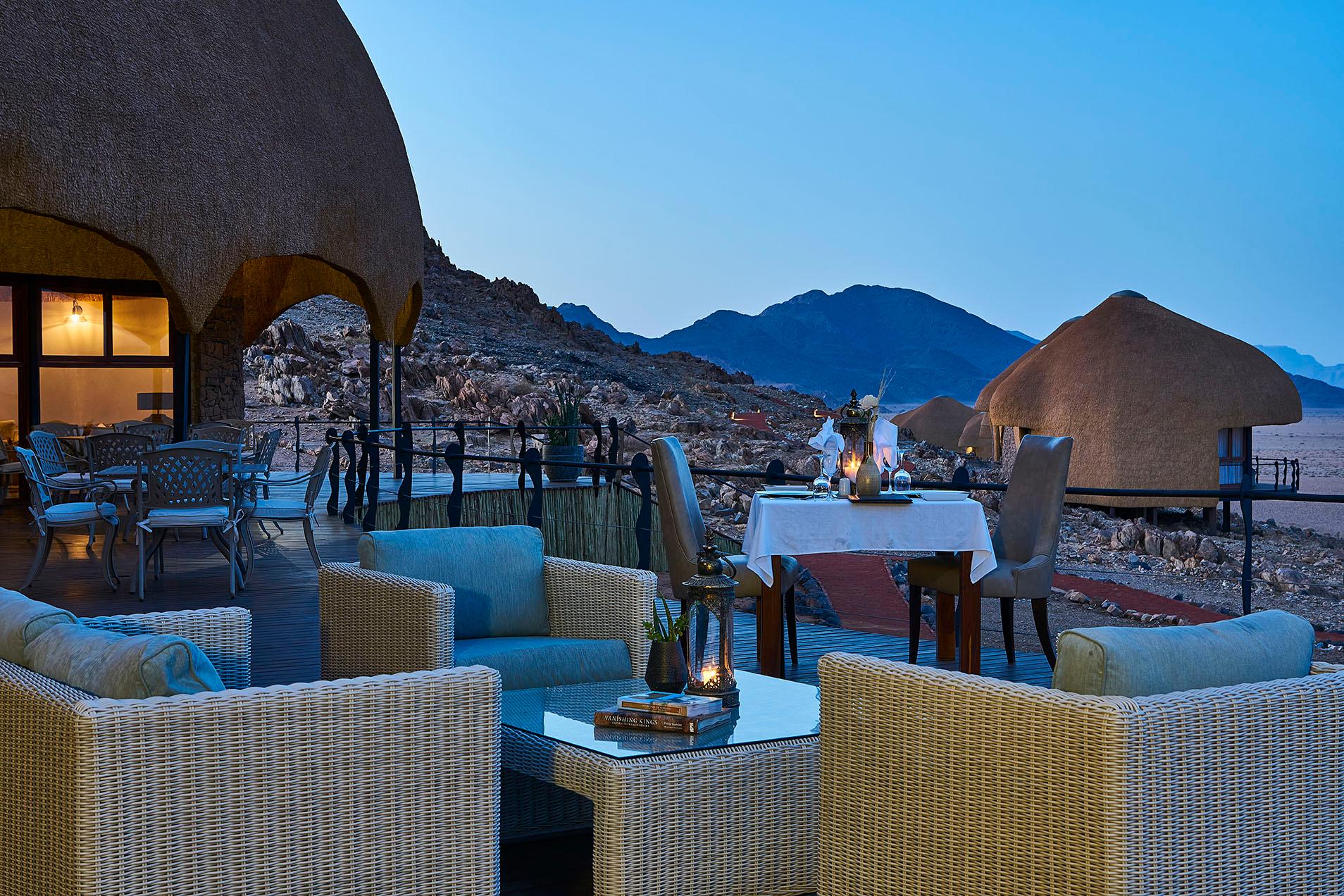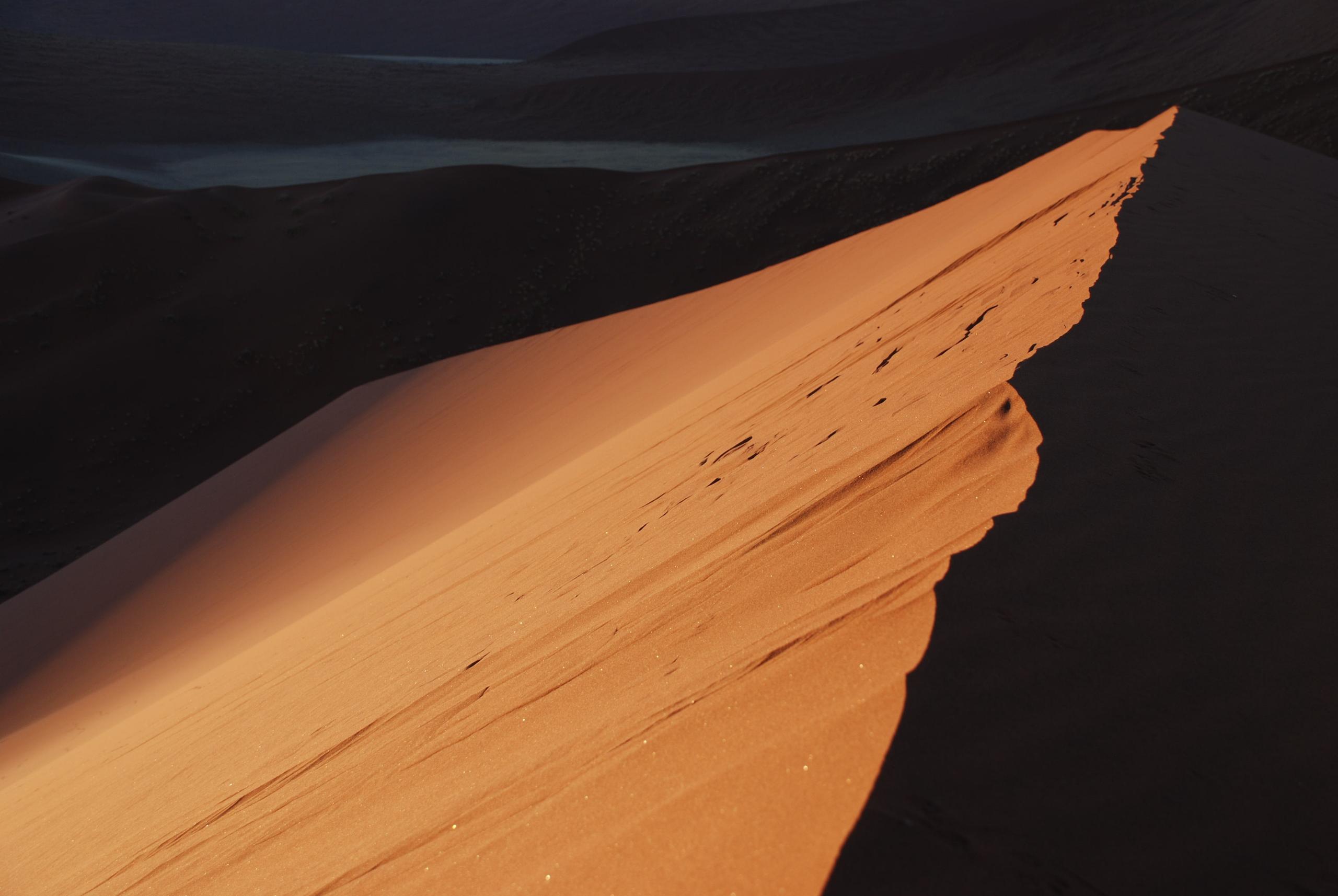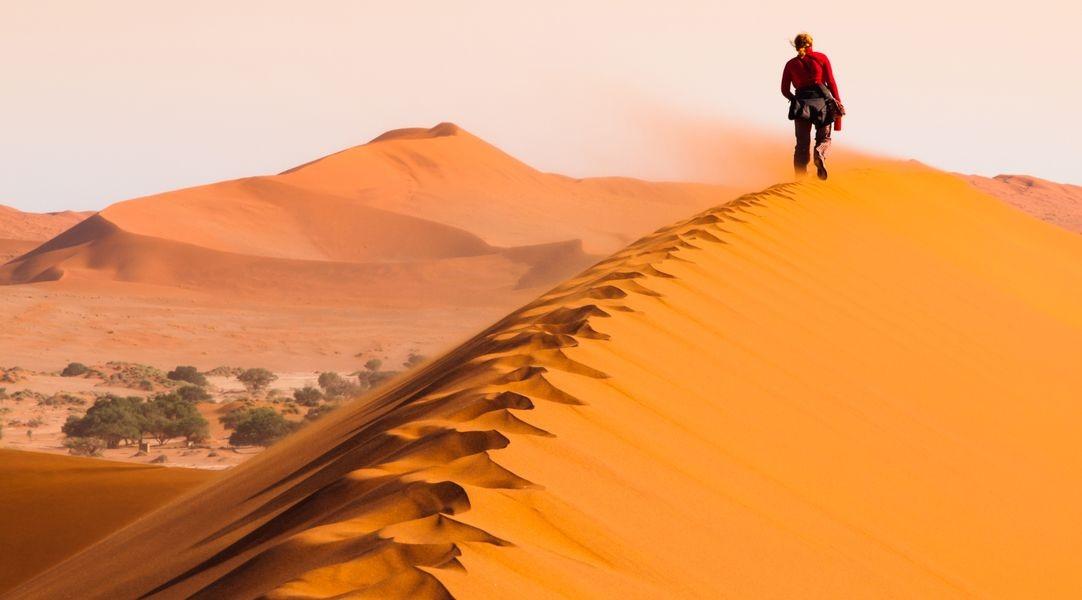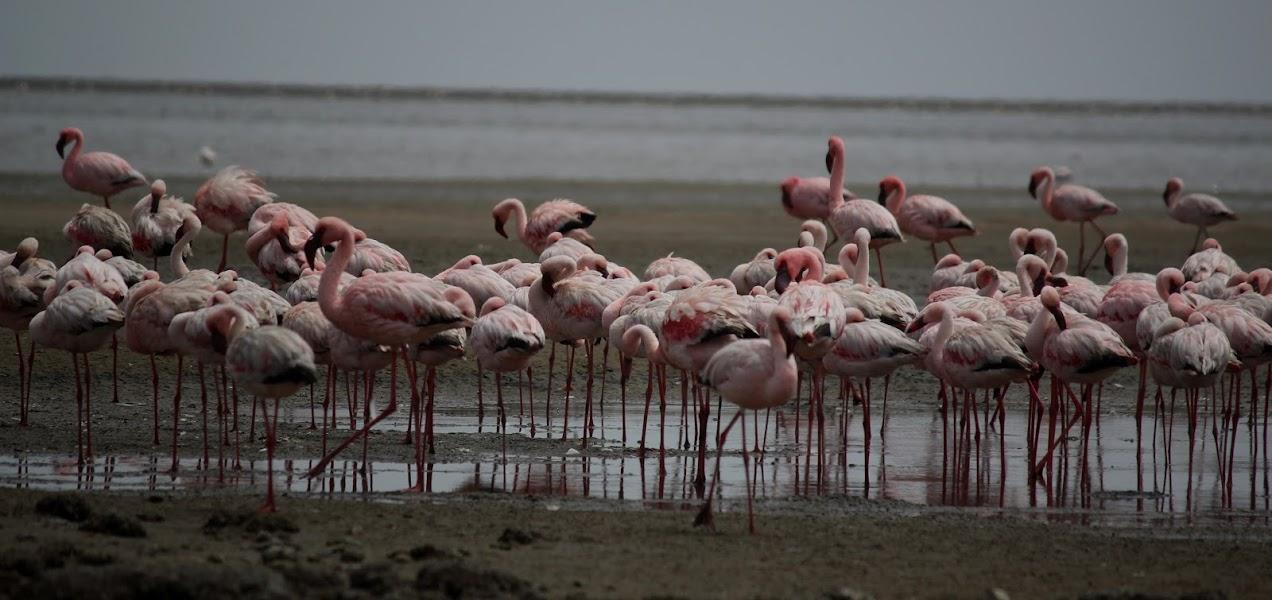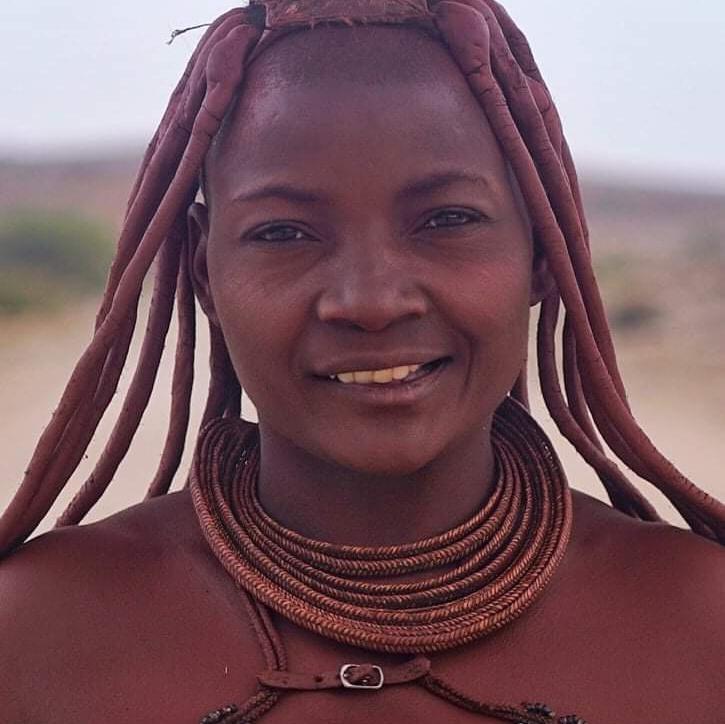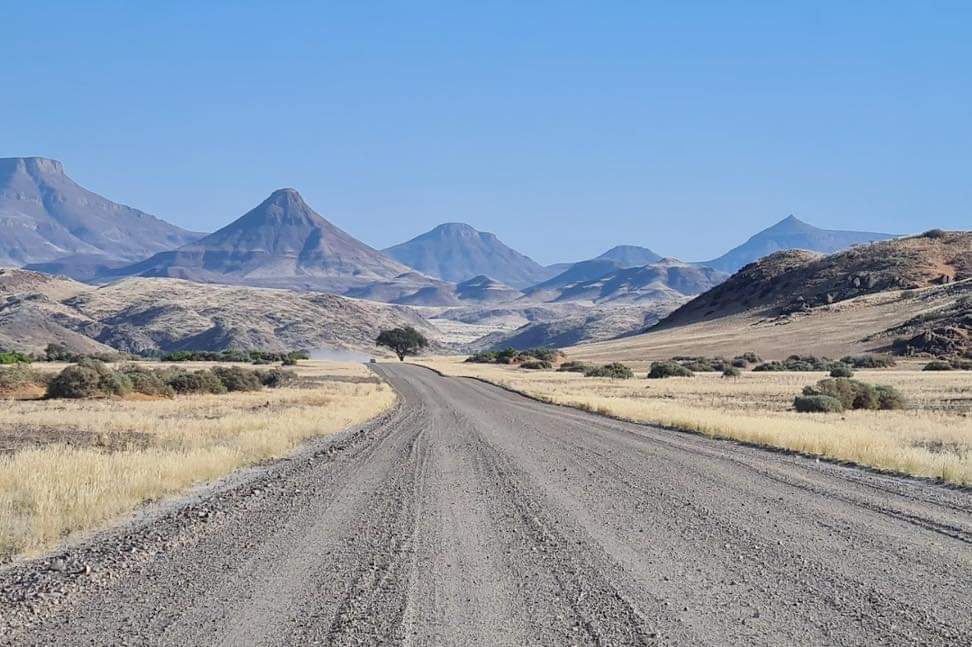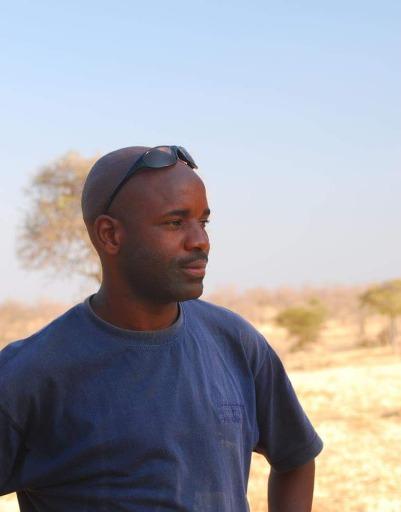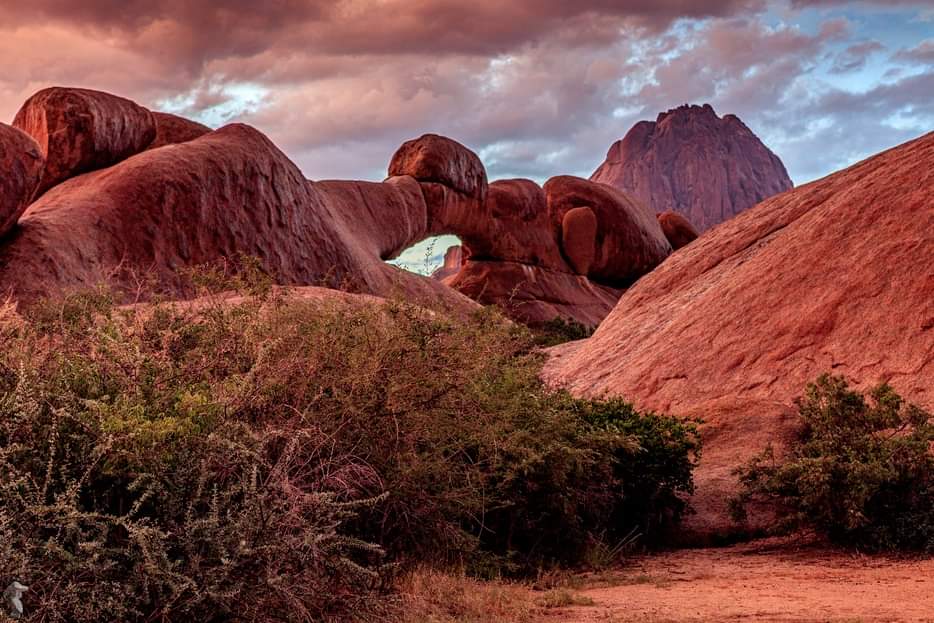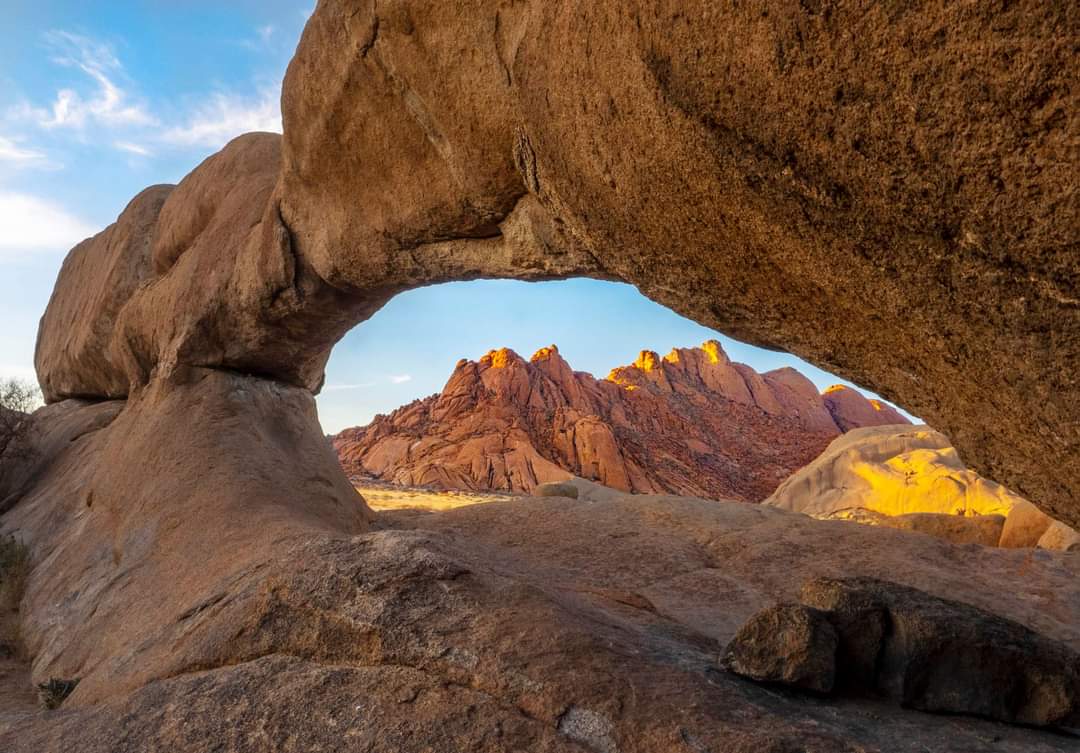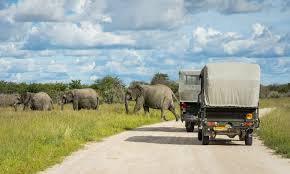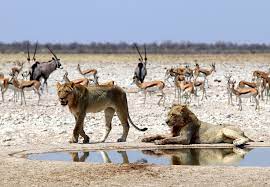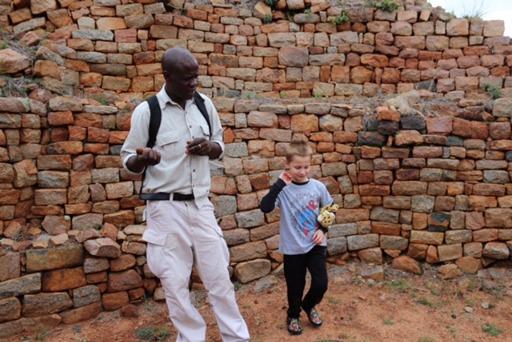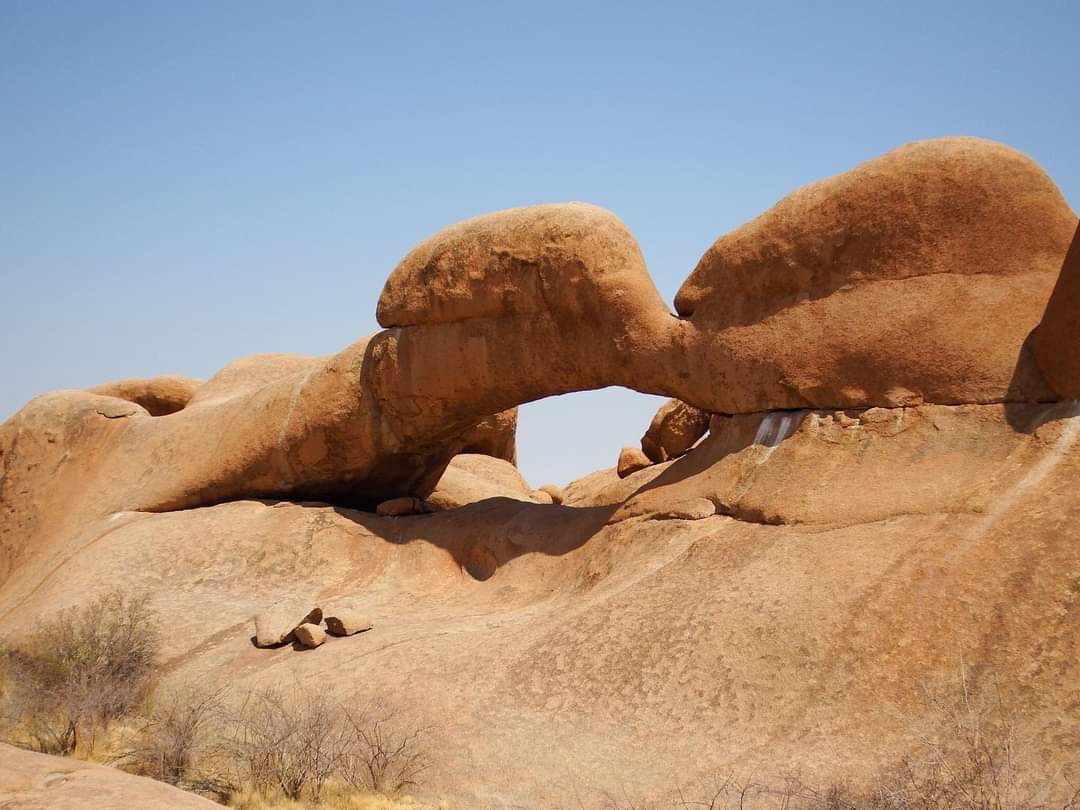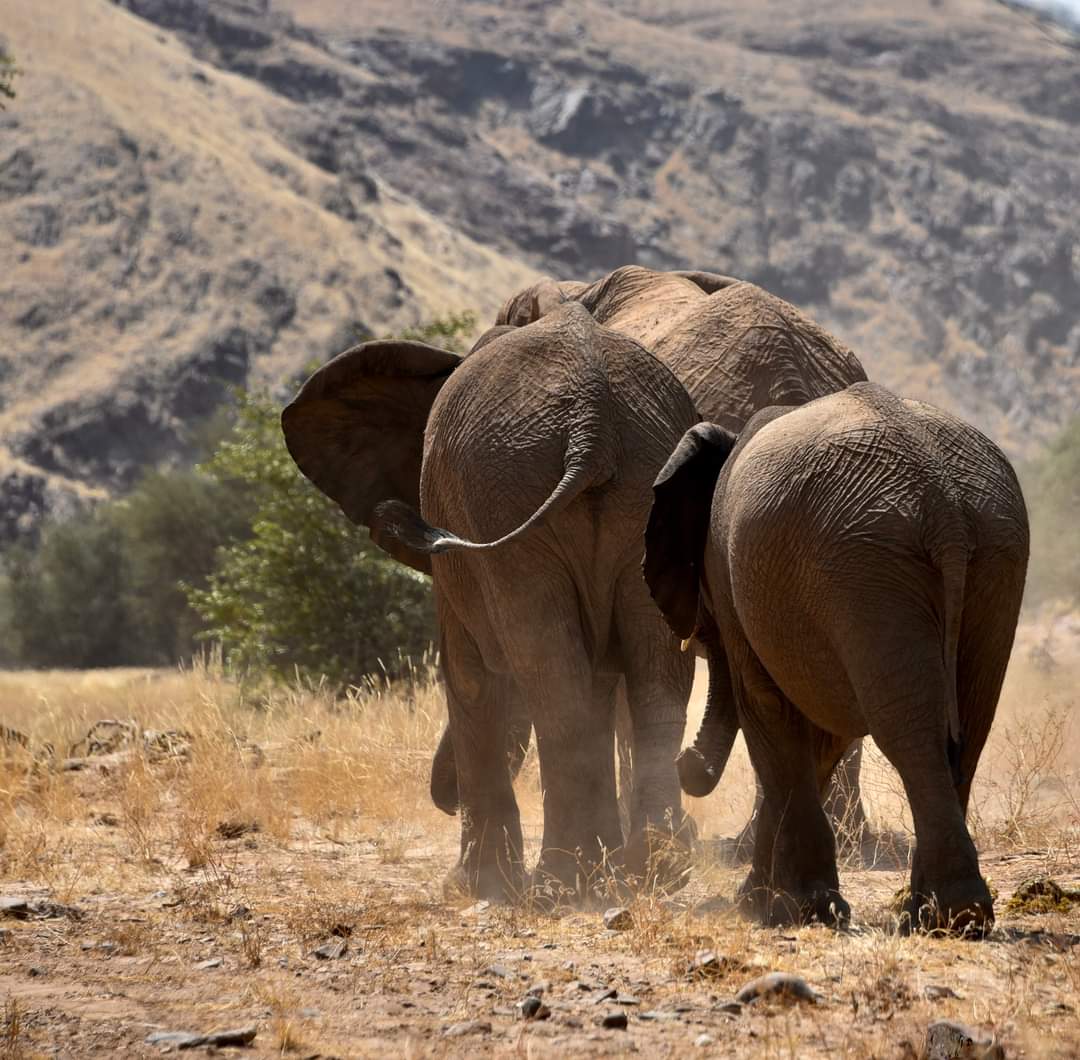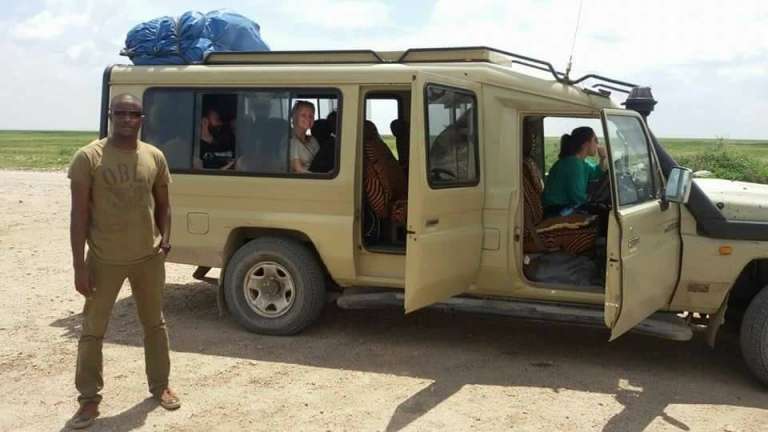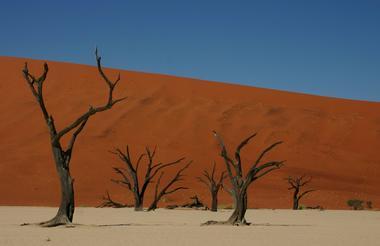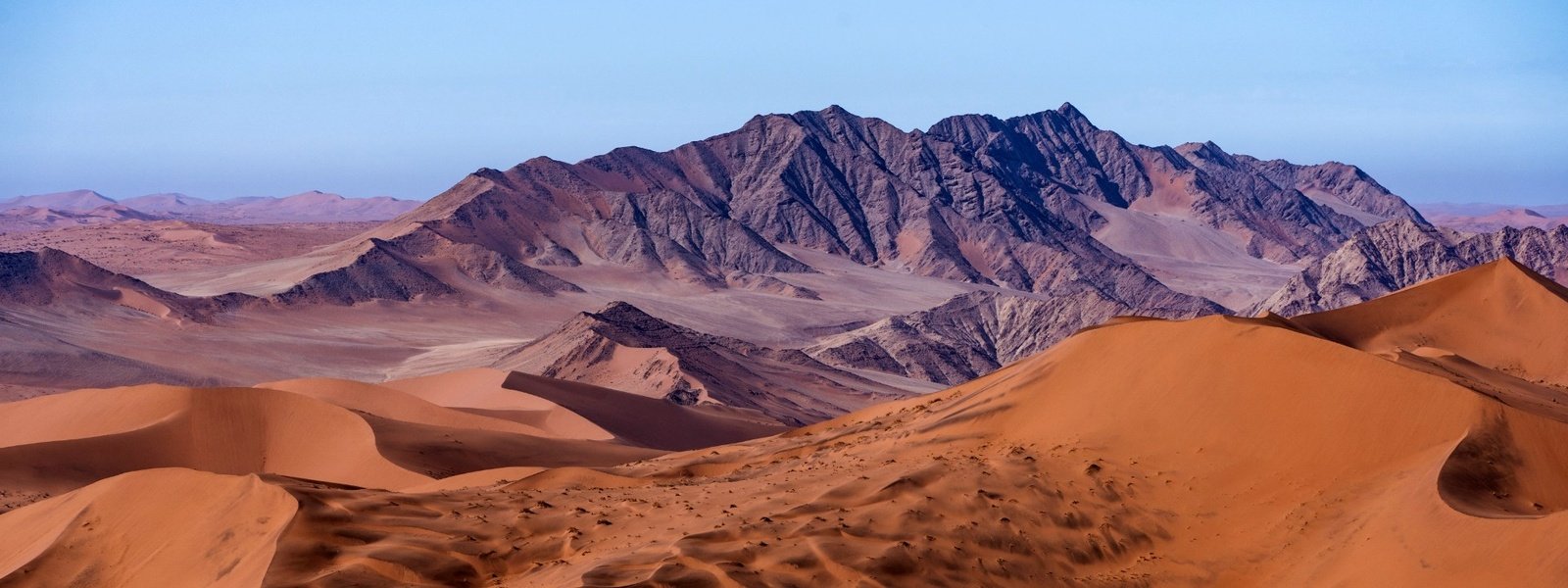
Namibia
Highlights of the Namib Desert - Namibia
Interesting facts of the Namib Desert
The majority of the Namib Desert is in Namibia, however, it also touches Angola and South Africa. Some interesting facts about this desert include: It’s the world’s oldest desert, it has been dry for at least 55 million years (some argue 80 million), also areas of the desert (in close competition with South America’s Atacama Desert) are considered to be some of the driest places on Earth (~2mm of rain a year). The geology of the desert consists of sand seas along the coast and gravel plains with mountain outcrops further inland. The climate of the Namib is also highly unusual: The hot inland air meets the cold stream carried by the Benguela current creating a foggy cooler air approximately 180 days of the year. This sudden change towards the cold can be an uneasy experience for travelers arriving in the coastal area from the inland region.

The Sossusvlei area
The Namib Desert has several must see destinations; Sossusvlei is Namibia’s most spectacular attraction (a valley around 3 kms wide, a small part of the hundreds of kms wide and long unbroken desert of sand dunes); a large white, salt and clay pan surrounded by tall sand dunes. It’s situated in the Namib-Naukluft National Park characterised by its famous orange/pink/red sand dunes and white salt pans.The area’s biggest dune is Big Daddy (325 meters high), definitely a challenge to climb but worth the view on the top overlooking the endless desert. A bit easier to climb, however a more touristic dune is Dune 45, around 80 meters high, definitely offering an amazing sunrise and sunset experience on the top with the beautiful colors of the deserted landscape.
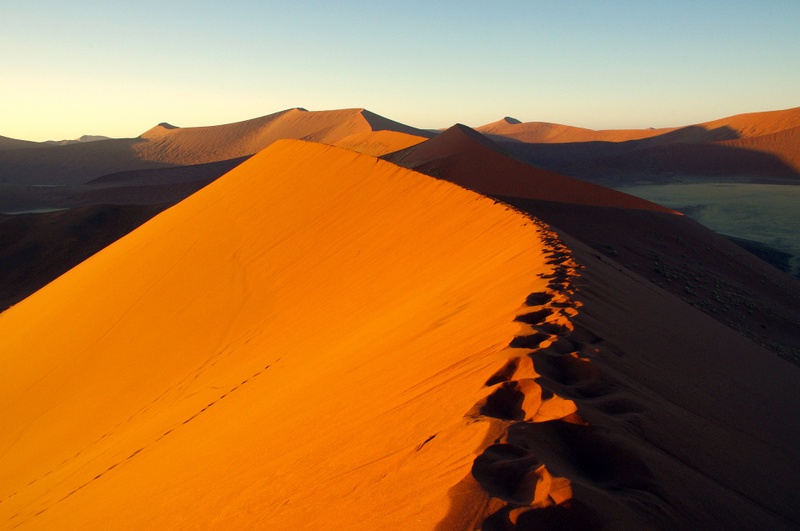
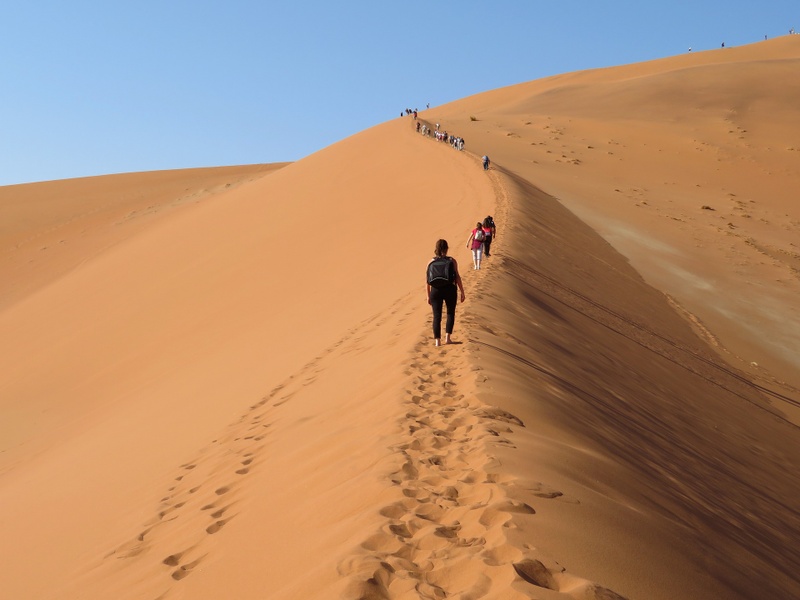
In the Sossusvlei area is another famous landmark called Deadvlei; the clay pan was once filled with water and allowed trees to grow, however centuries ago the water disappeared and the trees died and conserved and froze in a unique way thanks to the dry air. The Deadvlei is probably one of the most photogenic places in Namibia! The trees are approximately 900 years old!

Hiddenvlei is the least visited vlei in the area, its ideal for those who want to enjoy the beauty of the deserted landscape in a more private way.
Skeleton Coast and Sandwich Harbour
The Skeleton Coast National Park located more towards the north, a 40 km wide and 500 km long coastal stretch has a hostile environment but definitely a fascinating place to see. It got its name after the sun bleached whale skeletons and shipwrecks found along the coastline. Thick fog, rough sea conditions, unpredictable currents and stormy winds has been responsible for the destiny of the ships that ended up on the shore.
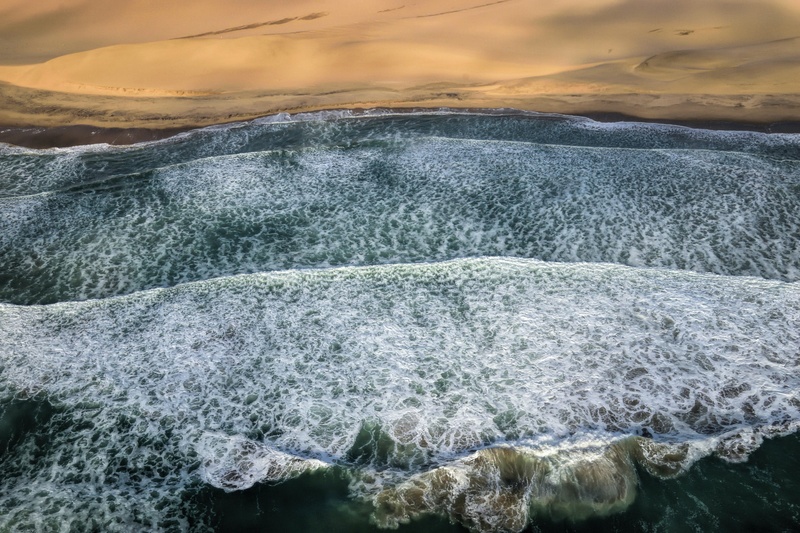
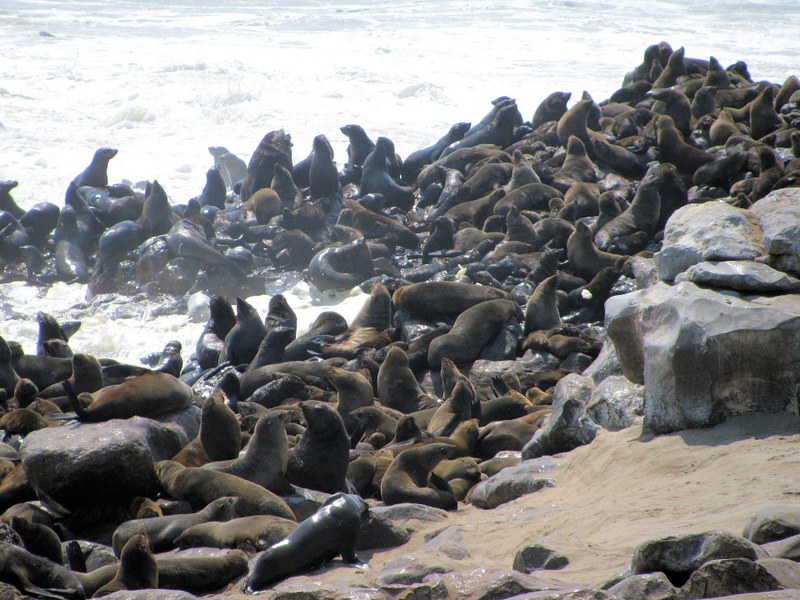
Sandwich Harbour is a bay in the north and a lagoon at the southern site. The lagoon is famous for its rich birdlife and bird sanctuary and the amazing views of the desert meeting the ocean; a unique landscape of huge dunes running straight into the ocean, creating breathtaking sceneries.
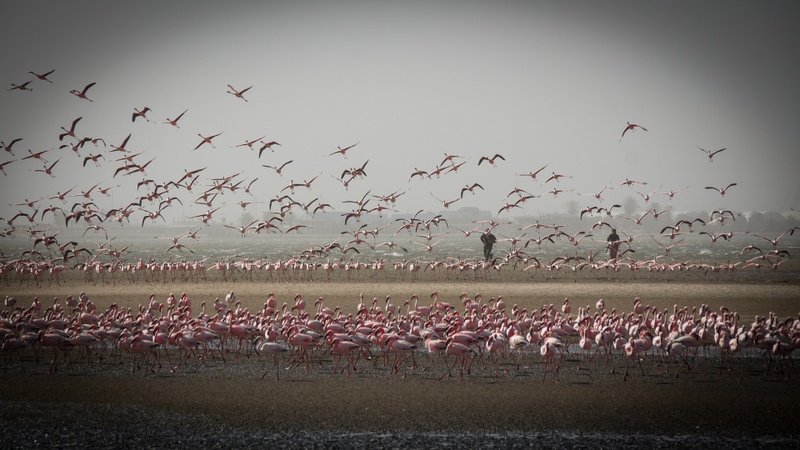
The breathtaking canyons of Namibia
Sesriem Canyon, located a bit further from the shore, more towards the inland is a natural canyon carved by the Tsauchab river about a kilometer long and 30 meters deep.
Probably the most breathtaking attraction in Namibia and one of Africa’s most impressive natural wonders is the Fish River Canyon. It’s the world’s second largest canyon after Arizona’s Grand Canyon; it’s 161 km long, spans 27 km across at the widest section and descends almost 550 m at its deepest point. The canyon offers unforgettable views, a unique desert ecosystem, challenging hike tours, fishing or swimming. A pristine place with vastness and peace, a natural wonder can still be admired in more or less crowd-free peace.


The Namib Desert is a photographer’s paradise; breathtaking views and landscapes a Martian landscape beauty found on Earth!
